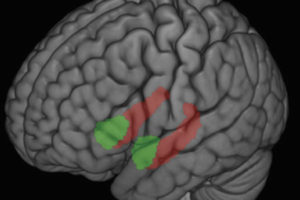Everyday experience and psychology research both indicate that paying close attention to one thing can keep you from noticing something else.
However, a new study from the University of Wisconsin—Madison suggests that attention does not have a fixed capacity – and that it can be improved by directed mental training, such as meditation.
Seeing and mentally processing something takes time and effort, says psychology and psychiatry professor Richard Davidson of the UW–Madison School of Medicine and Public Health and the Waisman Center. Because a person has a finite amount of brainpower, paying close attention to one thing may mean the tradeoff of missing something that follows shortly thereafter. For example, when two visual signals are shown a half-second apart, people miss the second one much of the time.
"The attention momentarily goes off-line," Davidson says. "Your attention gets stuck on the first target, then you miss the second one." This effect is called "attentional blink," as when you blink your eyes, you are briefly unaware of visual signals.
But, he adds, the ability to occasionally catch the second signal suggests that this limitation is not strictly physical, but that it may be subject to some type of mental control.
"The conventional view is that attentional resources are limited. This shows that attention capabilities can be enhanced through learning."
Led by postdoctoral fellow Heleen Slagter, Davidson's research group in the Waisman Laboratory for Brain Imaging and Behavior recruited subjects interested in meditation to study whether conscious mental training can affect attention. "Meditation is a family of methods designed to facilitate regulation of emotion and attention," says Davidson.
The new study, which appears online May 8 in the journal PLoS Biology, examined the effects of three months of intensive training in Vipassana meditation, which focuses on reducing mental distraction and improving sensory awareness.
Volunteers were asked to look for target numbers that were mixed into a series of distracting letters and quickly flashed on a screen. As subjects performed the task, their brain activity was recorded with electrodes placed on the scalp. In some cases, two target numbers appeared in the series less than one-half second apart – close enough to fall within the typical attentional blink window.
The research group found that three months of rigorous training in Vipassana meditation improved people's ability to detect a second target within the half-second time window. In addition, though the ability to see the first target did not change, the mental training reduced the amount of brain activity associated with seeing the first target.
"The decrease (of brain activity associated with the first target) strongly predicted the accuracy of their ability to detect the second target," Davidson says.
The results of the study show that devoting fewer neural resources to the first target leaves enough left over to attend to another target that follows shortly after it, he says.
Because the subjects were not meditating during the test, their improvement suggests that prior training can cause lasting changes in how people allocate their mental resources.
"Their previous practice of meditation is influencing their performance on this task," Davidson says. "The conventional view is that attentional resources are limited. This shows that attention capabilities can be enhanced through learning."
The finding that attention is a flexible skill opens up many possibilities, says Davidson. For example, he suggests, "Attention training is worth examining for disorders with attentional components, like attention deficit hyperactivity disorder."
– Jill Sakai






